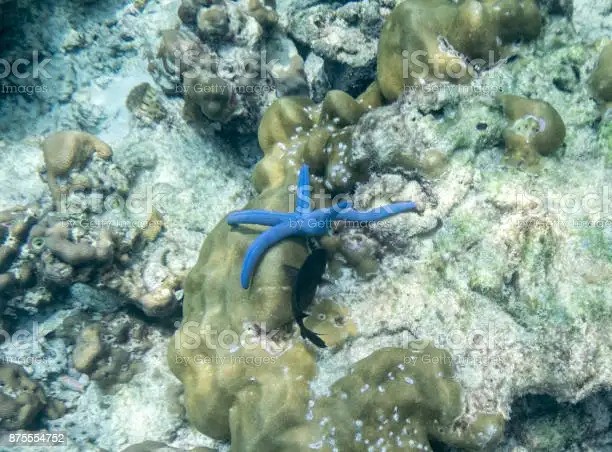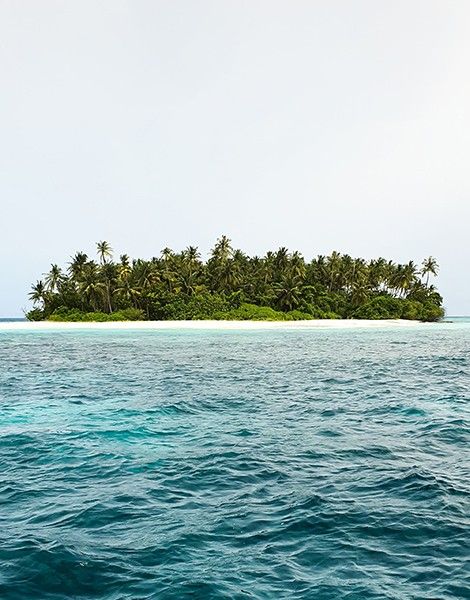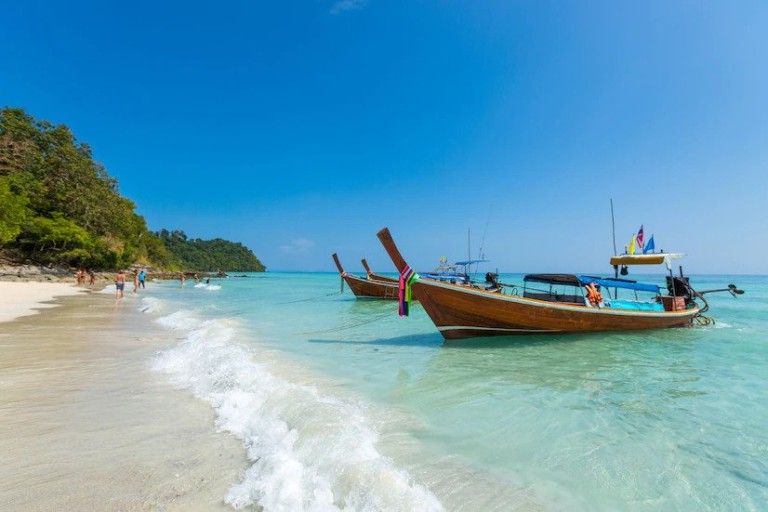Diving Sites in Port Blair



Scuba Diving in Inchkeith Wreck

About Inchkeith Wreck, Havelock Island (Swaraj Dweep)
When you are in Havelock Island (Swaraj Dweep), don’t miss out on the finest scuba experience at this dive site. A wreck covered in scorpionfish, cleaner shrimp, and patches of soft corals, this diving site is quite popular among beginner divers in the Andaman Islands. SS Inchkeith was a cargo vessel that sank at the mouth of the inlet near Duncan Island in March 1955. It carried coal and timber and struck a rock. It is a sought-after dive site and has low visibility. Thus, scuba divers feel an air of mystery around the wreck. One can see the huge propellor at the stern that sits upright in 60 feet of water. Great barracuda sometimes emerge from the shadows.
Entry:
By boat
Depth:
6 meters to 18 meters
Water type:
Salt
Dive types:
- Wreck
- Sandy bottom
- Ocean
Aquatic life includes:
Barracuda, Grouper, Sweetlips, Snapper, Rainbow Wrasse, Ghost Pipefish, Reef fish ( Scorpionfish, boxfish, puffer fish, surgeonfish, angelfish, bannerfish, triggerfish, parrotfish, trumpetfish, pipefish, clown fish, sweetlips, grouper, lionfish, etc), Ornate ghost pipefish
Suggested Equipment
- Camera
- Dive computer
- Rash guard
- Shorty
- Torch
- Wetsuit
Useful training for this site:
- Open Water Diver
- PADI Advanced Open Water Diver
- PADI Wreck Diver
- PADI Underwater Photographer
- PADI Discover Local Diving
Other Scuba Diving Sites in Havelock Island
Frequently Asked Questions
-
Q. 1 : Can beginners and non-swimmers dive at Inchkeith Wreck?
The Inchkeith Wreck diving spot is built around the wreck of a cargo vessel of the same name. The biggest issue with the dive is that the visibility is very low; this means divers usually carry torches with them when they go for a dive. Also, the dive is very deep, which is not conducive for beginners and, especially, people who do not swim. Most scuba divers who dive at Inchkeith Wreck either have intermediate or advanced-level skills.
-
Q. 2 : What is the depth of the Inchkeith Wreck, of Havelock Island?
The Inchkeith Wreck starts at around 6 metres but goes down to 22 metres or even deeper. Most of the wreck is found at 18 metres. You’d have to have some experience in scuba diving to be able to able to navigate your way through the wreck, especially, since it's mostly dark at that depth.
-
Q. 3 : When is the best time to scuba dive at Inchkeith Wreck, Havelock Island?
The best time to scuba dive at Inchkeith Wreck is in the period beginning from late October until early April. Havelock is located in the tropics, hence, during monsoons, the weather becomes very hot and humid. Also, more, importantly, there are frequent and sudden spells of heavy rain in the entire Andaman and Nicobar Islands around the time. However, from late October until April the weather is bright and pleasant. Since the chances of rain are less, you can enjoy a great dive. Some people also visit the Andamans during the off-season to save money on their trip. While this is a great idea, you’d still have to be cognizant of sudden rain spells. It is better to check the forecast for the days of your trip before you book your tickets. Also, since there are sudden chances of rain, despite the forecast saying otherwise, your scuba guide could cancel a dive if there is a possibility of rain on the day of your dive.
-
Q. 4 : How much does it cost to dive at Inchkeith Wreck, Havelock Island?
Inchkeith Wreck is primarily meant for intermediate and advanced-level scuba divers. Most diving sites may charge you between INR 5000-7000 per dive. This would include all your scuba diving gear including torches and a boat ride. If you want your scuba diving experience to be captured on camera, you can have videos and photos added to your package.
-
Q. 5 : Is Inchkeith Wreck good for scuba diving?
Inchkeith Wreck is a stunning site for scuba diving. It is the spot where the SS Inchkeith cargo ship sank in 1955, and since then a plethora of marine life has made the wreckage their home. A layer of rust adds colour to the myriad corals underwater. What will strike your eyes is the massive propeller that stands upright on the stern of the wrecked ship, with huge groups of vibrant fish circling throughout its 18 metres. The lack of visibility underwater and the old ship also creates a very eerie environment; this dive is not for the faint-hearted. Many experienced divers are attracted to Inchkeith Wreck just because of the challenging dive.
-
Q. 6 : What kind of marine life can you explore at Inchkeith Wreck?
You’ll find many giant fishes underwater. Barracudas and rainbow wrasses are very common around this part. If you turn your torch on any side, you may suddenly find ornate ghost pipefishes floating calmly just above the sandbank. Elsewhere, will be groups of angelfish and fusiliers who have made the wreck their home. There are also many puffer fish, scorpion fish, trumpet fish, lion fish, clown fish, and box fish marking different parts of the cargo as their territory. You may also find some snappers and butterfly fish casually gliding in the water.
-
Q. 7 : How do you reach Inchkeith Wreck, Havelock?
The wreckage site is around 20 km away from Havelock Island. So, it might take you anything between 30 minutes to an hour to reach the diving spot. Havelock Island itself can be accessed only by ferry. Flights are available to the Veer Savarkar International Airport at Port Blair. From Port Blair, you can take a ferry to Havelock Island at the government-run Phoenix Jetty. Ferries usually twice a day – once in the morning and once in the afternoon and may cost you anything between INR 300-500. Havelock is around 70 km away from Port Blair, so it may take you around 2-3 hours to reach the island. Doin’t worry about the time; the incredible view will ensure that you have a fantastic time.
-
Q. 8 : Are there any places to explore near Inchkeith Wreck?
Since Inchkeith Wreck is close to Havelock Island, you can explore many places on the island. Havelock is home to many beautiful beaches. The pristine white sand and the incredibly blue sea make for the ultimate beach vacation. If you want to have a lot of fun, do not miss Elephant beach. Radhanagar and Govindnagar beaches are also very famous. Radhanagar is known as one of the best beaches in Asia. Havelock is also popular for its mangrove forests. You can take a quiet kayaking trip down the mangrove alleys.
-
Q. 9 : Are there any other diving spots at Havelock Island?
Yes, there are many diving spots at Havelock apart from Inchkeith Wreck. If you are a beginner in scuba diving and miss not being able to dive at Inchkeith, you can hone your scuba skills at diving spots like Lighthouse, Aquarium, White House Rock, the Slope, Turtle Bay, and Mac Point. More experienced divers can enjoy Dixon’s Pinnacles, Johnny’s Gorge, Jackson’s Bar, the Wall, and Minerva’s Ledge.
-
Q. 10 : Are there any medical conditions that may hinder your scuba diving plans at Inchkeith Wreck?
You may want to avoid scuba diving if you have any kind of severe respiratory illness. At the very least, you need strong respiratory organs for scuba diving as you’d have to regulate your breath underwater. In case you have any respiratory problems, you should consult your doctor before booking your diving appointment, just to make sure the dive would not put you at risk. The same rule applies if you have any heart-related issues.
Diving Sites in Port Blair
Diving Sites in Havelock Island
Diving Sites in Neil Island









.jpg)













